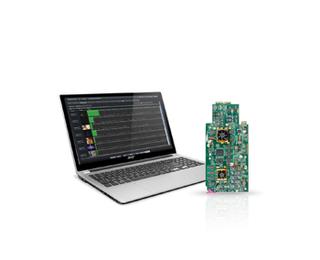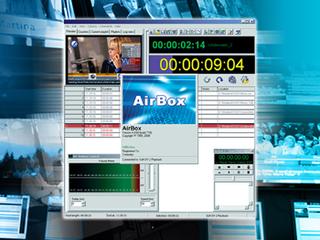How the Cloud Will Affect Traditional Video Playout Business
NEW YORK— While standalone video servers will continue to find a home in broadcast and content distribution facilities for some time, there’s no denying that the advent of remotely-located data centers that handle much of the same playout functions is slowly eating into sales.
That’s not good news for companies like Avid, Evertz, Grass Valley, Imagine Communications, Snell, Playbox Technologies and others, and a sign of the times for companies like Cisco, Ericsson and Harmonic, which incorporate off-the-shelf servers from companies like IBM and HP as part of an overarching IP-based distribution platform.
“Over time, we expect a general decline of appliance-based video servers, as software-based products become more potent, and also as IP transport moves towards Software Defined Networking,” said Joachim Bergman, head of Operations and Global Solutions for Ericsson Broadcast Services. “This means that the function/application of a traditional video server, manufactured by Grass Valley, Harmonic, Imagine Communications etc. will become open and can be moved into normal virtualized IT based hardware platforms, run on commercial off-the-shelf products or even in the public cloud.
Ericsson Next Generation Playout (made up of partner and Ericsson solution components and sold as a service with an SLA) offers broadcasters managed or hosted playout services that can be delivered worldwide. It gives broadcasters access to major data centers across the world, with signal distribution through hundreds of co-located carriers, distributors and connectivity providers. This connectivity network, coupled with a software-defined workflow, helps broadcasters to overcome the geographic dependencies that have previously limited playout. It supports a typical virtualized software environment and can eventually be optimized to run off a cloud-based infrastructure using Open Stack.

Avid's AirSpeed 5000 is a dedicated server platform and a core component of the Avid MediaCentral Platform. Avid’s AirSpeed 5000 is a dedicated server platform and a core component of the Avid MediaCentral Platform. It can be deployed as a standalone video server or tightly integrated with Avid ISIS storage and Interplay Production media asset management that, in turn, can be deployed as a cloud solution. Thus far Avid has not seen a decrease in its server business, although its standalone servers are not optimized for virtualization in a data center.
“There are market indicators that the video server business is on the increase,” said Kevin Usher, director of Broadcast & Media Product Marketing at Avid. He cited a recent Frost & Sullivan report that indicates that video servers as part of a Production Asset Management solution bring big benefits to broadcasters and content creators.
The Avid AirSpeed 5000 family of video servers (there are three core models and several software options such as DNxHD and Low Res proxy) supports four channels (configurable inputs and outputs).
Get the TV Tech Newsletter
The professional video industry's #1 source for news, trends and product and tech information. Sign up below.
Embracing virtualization, Grass Valley offers its Stratus Playout with a Densité SSP-3801 solid-state playout module. Stratus Playout is a cloud-enabled Software as a Service (SaaS) playout technology that uses Microsoft’s Azure “platform as a service,” hosted in Microsoft Data Centers.
Sam Peterson, product marketing manager at Grass Valley, said that, in terms of performance, resilience and scalability, these centers are vastly superior to anything that can be reasonably built within a broadcast facility. All GV Stratus Playout metadata is stored three times in each data center and then replicated in real-time between data centers, for redundancy.

The Grass Valley Stratus Playout is a cloud-enabled Software as a Service playout technology that uses Microsoft's Azure. “Customers want the advantages of virtualization without losing control of their content,” Peterson said. “The SSP-3801 solid-state playout module for the Densité modular platform enables broadcasters to leverage the flexibility of the cloud. The card is easily installed at the edge of any network and provides frame accurate playback, displays still and animated logos and high quality pre-rendered graphics pulling content from the customers data cache, whether that is a local NAS or SAN, or a cloud-based storage architecture.”
Imagine Communications markets its Versio integrated playout server, either standalone or as a cloud-based solution. Going beyond basic server, graphic branding and automated playout features, Versio offers graphics, DVE and mix effects, combined with Imagine Communications automation and server technology. The result is a high-quality image with media flexibility and the power of control systems that tie into the entire playout workflow, from content creation to archive.
“Meeting customers’ business goals for their cloud and virtualization initiatives requires a solution that goes beyond simply running playout servers in the cloud,” said Stephen Smith, PLM Workflow, Asset Management & Integrated Playout Solutions for Imagine Communications. “Our customers are looking for a pathway that enables them to realize the full benefits of cloud-based playout.
“The optimal solution is a unified software and IP-based platform designed specifically for the cloud and virtualized environments,” Smith adds. “It must also integrate seamlessly with customers’ on-premises playout systems in hybrid architectures to enable customers to continue to leverage their existing investments while moving to the Cloud at their preferred pace to match their changing business needs.”

Imagine Communications markets its Versio integrated playout server, either standalone or as a cloud-based solution. PlayBox Technology offers its AirBox, which will include a version suitable for virtualization will be released in the near future, according to Don Ash, managing director at PlayBox Technology UK Ltd. He said that the advent of the cloud has increased business for his company.
“Yes, it has resulted in increased business,” Ash said. “Cloud-based playout and server virtualization offer a flexible and easy way to deploy workflows. However, IT server based playout with CPU/GPU muscle is still needed to get the job done. Therefore, different server types are used in cloud-based infrastructures.”
The AirBox playout and broadcast automation server provides automated content playout for satellite channels, cable head-ends, over-the-air broadcasters and corporate TV users. The latest version incorporates a GPU-enhanced graphics mixing engine that allows video rotation effects and depth-order laying effects to be performed in real time. Logo animation facilities are also added for applications such as titling, captioning or channel branding.
In its automated playout mode, AirBox allows fixed-time scheduling for weeks ahead. AirBox can be used for live production as well as automated playout. Every clip in the playlist, except the one currently playing, can be trimmed, edited or repositioned seamlessly without stopping current playout session.

PlayBox Technology's AirBox server will be available in a version suitable for virtualization in the near future. Snell’s server is called ICE and provides a range of channel-in-a-box functionality. ICE is available in a number of configurations, from the entry level ICE LE to the full Enterprise ICE model.
The current generation of ICE is controlled by Morpheus automation. Morpheus can be fully virtualized and Snell has several customers that are running fully virtualized Morpheus systems controlling ICE.
Snell has also announced a new variant of ICE that can be fully virtualized, called ICE OD. This is a software-only product built on Snell’s On Demand platform that allows video and audio processing applications to be run on a range of processing platforms—including virtual machine environments. A combined Morpheus and ICE OD system will be able to run a fully featured broadcast channel (Automation, server, master control, graphics, captioning, ancillary data, Nielsen) in a virtual machine system. Live feeds and program output will be carried over IP streams.
“Cloud-based playout is in the very early days and has minimal market impact so far, but has substantial customer focus for systems in the immediate future and long term,” said Neil Maycock, chief architect at Snell. “Rather than increase server business cloud-based playout is going to redefine what a server is. A true cloud implementation for the delivery of a television service will be a collection of software processes that are combined to provide the required functionality. The move to cloud is less about outsourcing and more about creating agile systems that can rapidly adapt to changing business requirements.”
It’s clear that manufacturers of video servers understand what cloud-based playout means to their customers and are making accommodations for it. They also see the writing on the wall and what it means for their bottom line.
